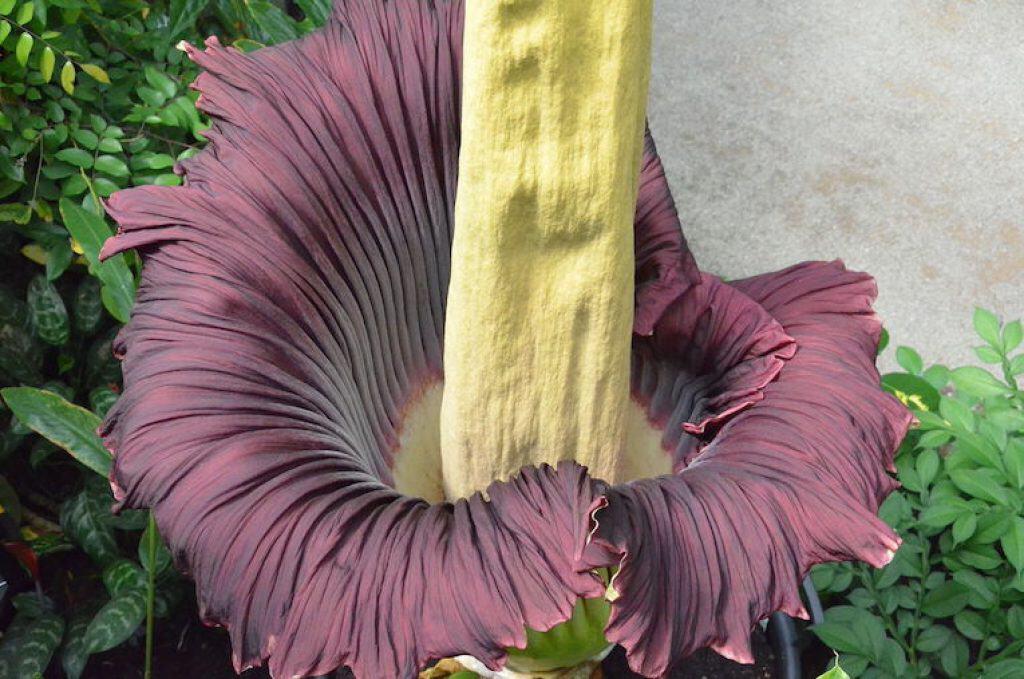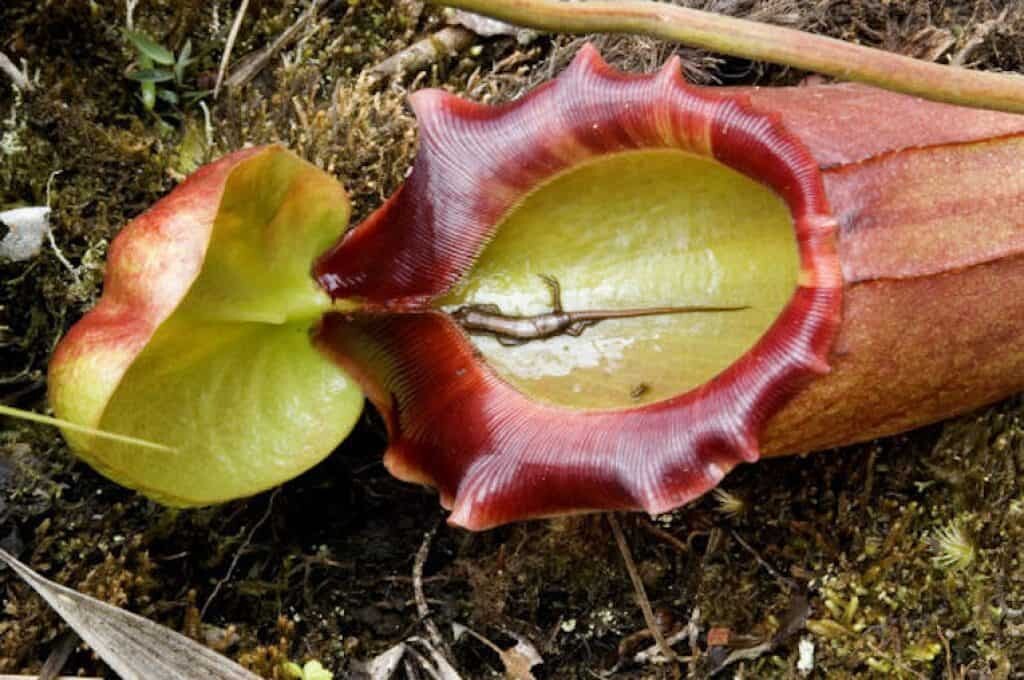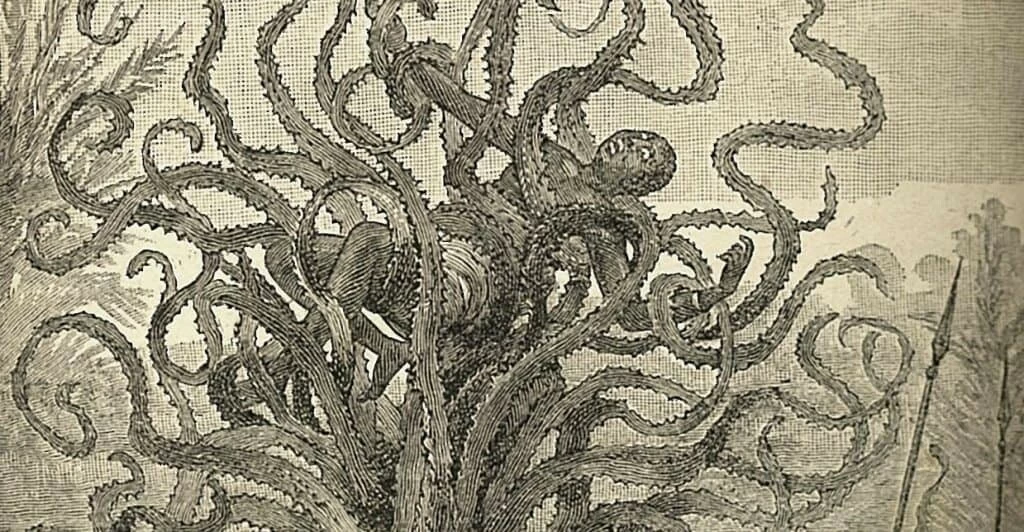History is filled with many legends of man-eating plants and trees. There really are carnivorous plants that can catch and consume small animals and insects, but are there or have there ever been savage meat-eating plants capable of catching humans, as some explorers have claimed? Perhaps there were pre-historic specimens that had survived after all the mega-fauna (and flora) died off. Or it is possible that explorers simply needed to justify their expeditions and funding for them by drumming up discoveries that never really happened? In this article, we’ll look at six of the most reputedly vicious man-eating plants in the world and what discoverers and indigenous tribes had to say about them. But first, how did meat-eating plants arise?
The Evolution of Carnivorous Plants
All plant species can produce their own food using a process known as photosynthesis. This involves removing carbon dioxide from the air, water from the ground, and direct sunlight. In addition, plants also require certain minerals that they filter directly from the soil through their roots. Some plants, however, have evolved to grow in moist places such as bogs or swamps. The waters in these regions tend to rob them of the subterranean minerals that plants rely upon. To combat this deficiency, these plants sought nutrients from elsewhere. Thus, they became carnivorous plants.
Renowned biologist Charles Darwin was fascinated by these insectivores, as he called them, and he devoted a decade and a half of his life to their study. The best known of these insectivores is the Venus Flytrap. Lets take a look at some other known and cryptid carnivorous plants and trees you may not have heard of.
1. The Corpse Flower

No carnivorous plant in existence is a direct threat to the average human being. But one of the plants considered to be responsible for rumors of man-eating flora is something known as Amorphophallus Titanum or The Corpse Flower. Experts do consider this to be the largest, most pungent plant in the natural world. One look at this monster plant is enough for some people to firmly believe that it could consume a full grown man.
When the Corpse Flower is in bloom at 9 feet tall it dwarfs a man and gives off an odor that people describe as a mix of a rotting corpse and excrement. Carrion beetles and flesh flies are attracted to this bizarre odor and are covered in pollen when they become entrapped inside this plant. The Corpse Flower has been known to grow as much as 4 inches in a single day.
2. The Madagascar Tree
A report from 1878 made by a German explorer called Carl Liche outlined a terrible ceremony. Liche was on the island of Madagascar with the local tribe named the Mkodo. He described how the villagers selected a sacrifice for the man-eating tree. The victim, a teenage girl, was prodded with javelin-like implements and compelled to climb this tree. Liche described the Madagascar Tree as resembling a giant pineapple with long hairy tendrils at the top of it. A set of tentacles surrounded a pool of fluid, which the girl was made to drink. Liche continued:
“The atrocious cannibal tree, that had been so inert and dead, came to sudden savage life. The slender delicate palpi, with the fury of starved serpents, quivered a moment over her head, then as if instinct with demoniac intelligence fastened upon her in sudden coils round and round her neck and arms; then while her awful screams and yet more awful laughter rose wildly to be instantly strangled down again into a gurgling moan, the tendrils one after another, like great green serpents, with brutal energy and infernal rapidity, rose, retracted themselves, and wrapped her about in fold after fold, ever-tightening with cruel swiftness and savage tenacity of anacondas fastening upon their prey.”
See also: Ukraine’s Mutant Spider
Research into this report – believed to be the first report of this kind – has shown there was no such tree on Madagascar. The Mkodo tribe could not be located and even Liche himself was said to be a fabrication.
3. Nepenthes

The Nepenthes, also known as pitcher plants, are the largest known carnivorous plants yet discovered. The largest specimens can be found in the rainforests of Southeast Asia and their vines can grow to as much as 50 feet in length. The pitchers of this monster are a foot in length and some of them are able to hold four quarts of liquid inside them. The main victims include small frogs and insects, but the occasional rat can be found digesting within the Nepenthes. While the giant carnivore plant is not a threat to humans, humans are certainly a threat to it. Local peoples have discovered a method to clean out the pitchers and use them for cooking rice. They also use the vines as rope.
4. Nicaraguan Vampire Vine

Found in the swamps of Nicaragua, local natives refer to this elusive plant as ‘The Devil’s Snare.’ It has been described as an octopus in general appearance. A naturalist called Dunstan spent two years studying the local plant and animal life and made this discovery in a swamp close to Lake Nicaragua. Dunstan was supposedly collecting specimens in the area when his dog let out a loud cry.
Unsure whether or not this was due to pain, terror, or a combination of the two, Dunstan rushed to the source of the dog and saw it in amidst a network of roots or fibers. These were dark in color, somewhat black, and emitted a sticky gum that had a horrible odor. Dunstan hacked away at these tendrils but was initially unable to do so. Not only were these difficult to cut with just his knife, but they actively fought back.
Dunstan did manage to save his dog, but both suffered injuries during this encounter. Dunstan’s skin on both hands was blistered; his dog was covered in blood and spots that puckered. The canine was disoriented and had trouble walking. Not much else is known about this plant, but the locals do fear it immensely and leave it well alone.

5. Yate Veo Tree
Rumor has it that Central America is home to a vicious man-eating tree with long spikes that purportedly impales its victims. Anyone or anything can be overwhelmed by the impact of these spikes and the tree does not discriminate. The spikes often remain hidden from sight until they are triggered by pressure upon them. Once in the clutches of the tree and its spikes, quite often it is too late to escape. The savage tree absorbs the victim’s blood into its trunk before re-setting itself for another meal.
See also: Yggdrasil Tree of Life
6. The Death Flower
During a voyage led by the explorer Captain Arkwright in 1581, a discovery on the South Pacific islet known as El Banoor was recorded. A man-eating flower was described in the ship’s log of Arkwright. He described this as a large flower with bright petals capable of releasing a sleep-inducing toxin that causes the victim to rest on the large petals. Once the victim was in its grip, the flower would close over the victim and digest him alive. Assuming that this is such a flower in a lost South Pacific island, Arkwright must have been a witness to this process in action. This is the only known report of a carnivorous flower from this part of the world.
While none of these carnivorous plants and trees are likely to be found in an urban environment by a downtrodden florist who wishes to make a name for himself, there is a chance, however remote, that undiscovered forms of carnivorous plants might be lurking deep inside one of the many rainforests of the world. Perhaps someone will find one someday and bring it back to civilization. Perhaps it will even have the voice of Levi Stubbs – but the Little Shop of Horrors might be best left in the wild.
Sources
The UnMuseum
Mysterious Universe
Sites pulled 23 April 2016